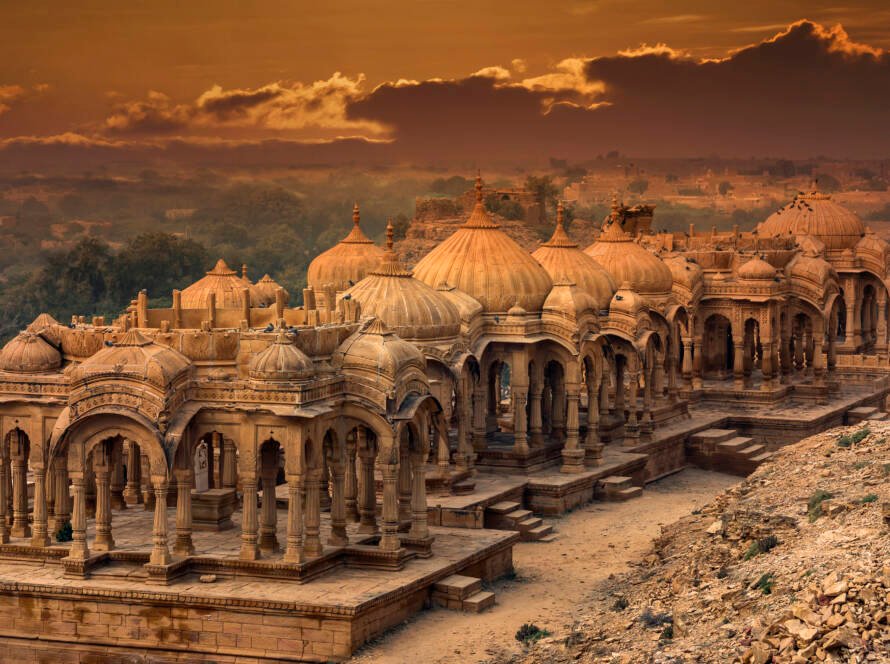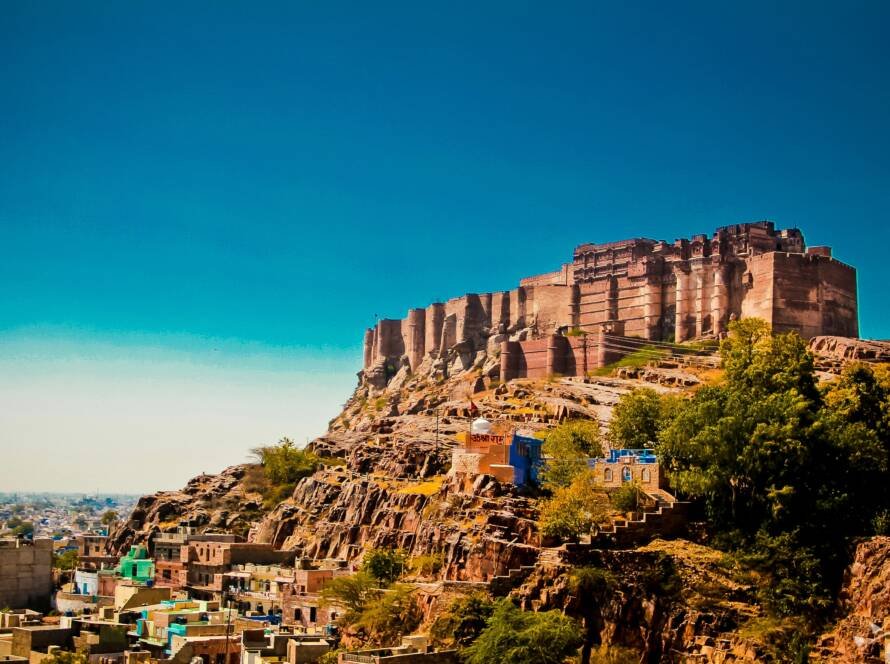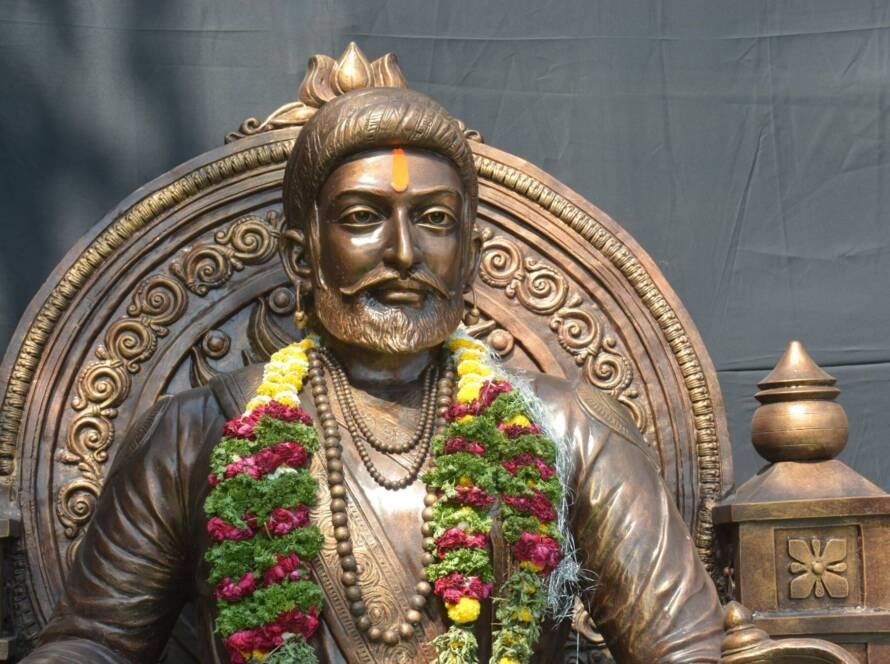In the annals of Indian history, few architectural marvels capture the essence of Rajput valor and grandeur quite like the Gwalior and Chittor forts. These formidable structures, rising majestically from the heart of India, offer a captivating glimpse into the nation’s rich heritage and the indomitable spirit of its rulers. As we traverse through the tales etched in stone, we uncover not only the architectural brilliance but also the fierce pride and enduring legacy of the Rajput era.
Gwalior Fort: The Imposing Sentinel of Madhya Pradesh
Perched atop a steep sandstone hill in Madhya Pradesh, the Gwalior Fort is an awe-inspiring fortress renowned for its impregnable walls and exquisite architecture. Often hailed as one of the most fortified and invincible citadels in India, Gwalior Fort’s grandeur is an embodiment of Rajput military ingenuity and artistic excellence. The fort’s history stretches back to the 8th century, with successive dynasties embellishing it with their distinctive styles.
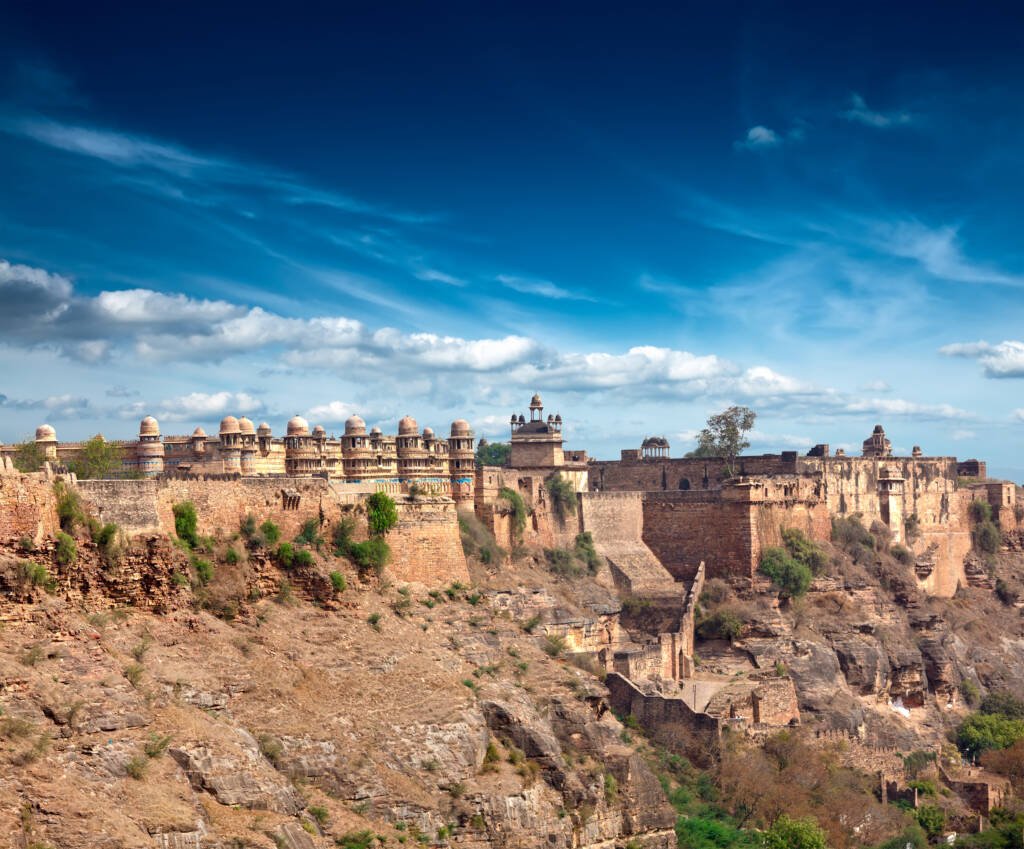
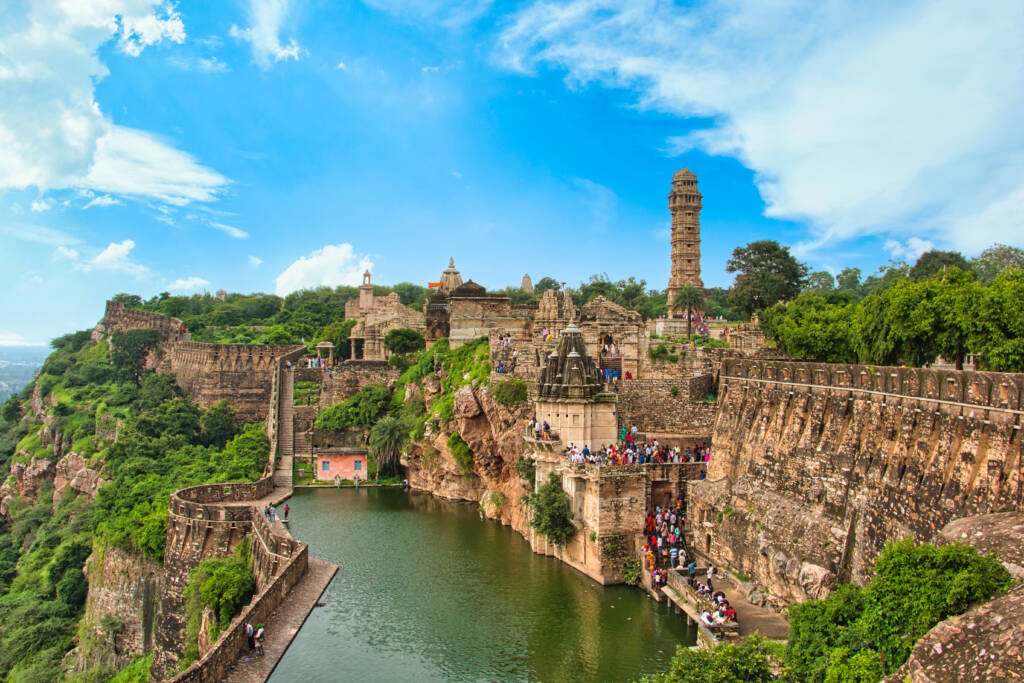
The fort’s architectural splendor is exemplified by the Man Mandir Palace, a masterpiece of Rajput architecture. Its façade is adorned with stunning blue glazed tiles and intricate jali work, depicting the artistic sensibilities of the era. Inside the palace, one can marvel at the delicate carvings and vibrant frescoes that reflect the opulence of the Rajput court. The fort also houses the Saas Bahu Ka Mandir, a pair of temples dedicated to Vishnu, showcasing detailed carvings and a sense of serene devotion.
Gwalior Fort’s strategic location and formidable defenses made it a coveted prize in the myriad conflicts that shaped medieval India. It was the site of several sieges and battles, each adding layers to its storied past. Today, the fort stands as a testament to the architectural prowess and enduring legacy of its builders, offering visitors a window into an era of splendor and resilience.
Chittor Fort: The Fortified Sentinel of Rajasthan
In stark contrast, the Chittor Fort, located in the arid landscape of Rajasthan, stands as a symbol of Rajput bravery and sacrifice. The fort’s towering presence is a tribute to the heroic struggles and indomitable spirit of its defenders. Its origins date back to the 7th century, and it has since been the focal point of numerous epic battles and legendary sieges.

The Vijay Stambh, or Victory Tower, is one of Chittor Fort’s most iconic features. Erected by Maharana Kumbha in the 15th century to commemorate his victories, the tower rises to a height of 37.2 meters and is adorned with intricate carvings depicting scenes from Hindu mythology. Nearby, the Rani Padmini’s Palace, named after the legendary queen, offers a glimpse into the opulent lifestyle of the Rajput royalty. The palace’s exquisite architecture and its strategic location within the fort underscore the royal grandeur and historical significance of the site.
The fort’s Kirti Stambh, or Tower of Fame, further exemplifies the architectural and cultural richness of Chittor. Built by a Jain merchant in the 12th century, this tower stands as a tribute to Jainism and showcases detailed carvings and inscriptions that reflect the spiritual and artistic achievements of the time.
Both Gwalior and Chittor forts have witnessed the ebb and flow of empires, the rise and fall of kings, and the enduring spirit of their defenders. As historical and archaeological landmarks, they offer a profound insight into India’s cultural and political evolution. Today, these forts are more than just remnants of the past; they are living monuments that continue to inspire awe and admiration, preserving the legacy of the Rajput era for generations to come.

